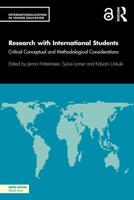Publisher's Synopsis
Since the end of the Cold War, the US has employed its armed forces into a host of contingency operations in countries, such as Somalia, Haiti, and Bosnia. More recently, the US has undertaken operations in Afghanistan and Iraq as part of the larger Global War on Terrorism. Throughout each operation, the military was not the lone instrument of national power employed into the region. As such, these operations have proved particularly complex as the US military has experienced difficulty achieving unity of effort with the other involved US governmental agencies through the operational level interagency process. This thesis tests the proposition of whether problems achieving unity of effort are due to the organizational structure of agencies functioning at the operational level, the operational framework wherein coordination takes place, or organizational culture. To help answer this question, this thesis will review the interaction of military and nonmilitary organizations at the operational level during three operations: Operation Uphold Democracy in Haiti (1994-1997), the Global War on Terrorism's Operation Enduring Freedom in Afghanistan (2001 - present), and Operation Iraqi Freedom (2002 - present). Using Graham Allison's three conceptual models for analyzing governmental decision making, study into the interaction of organizations through the interagency process will provide insight into where obstacles to unity of effort originate and potential ways they can be overcome.










